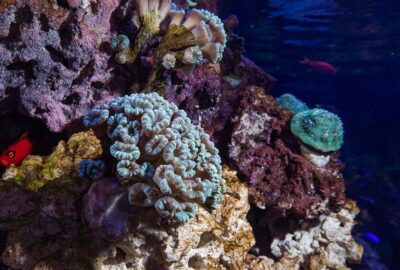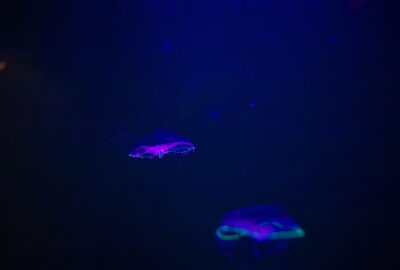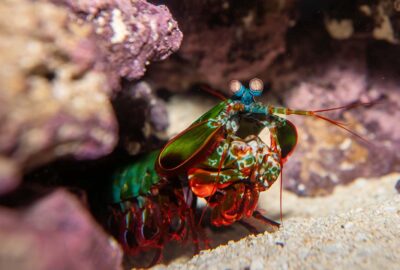Are You Afraid of the Dark... Exhibits?
Peek into the shadows and meet the deep-sea animals that thrive in the dark.
By New England Aquarium on Thursday, October 23, 2025

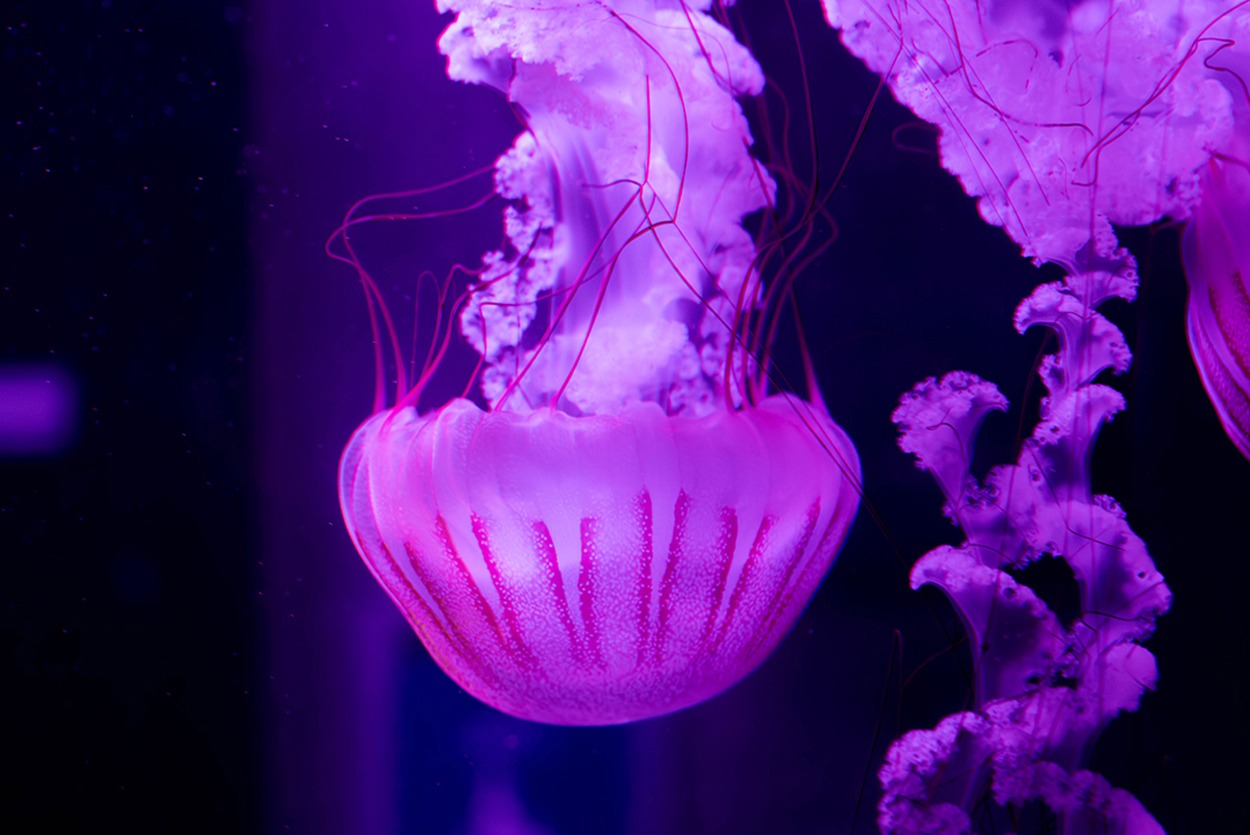
If you were to dive towards the bottom of the ocean, you might be surprised how dark your surroundings become.
Water absorbs visible light, so the deeper you go, the less you’re able to see. The top 200 or so meters of the ocean are often called the euphotic, or “sunlight,” zone, where there’s still enough light to support photosynthesis. Below this is the dysphotic, or “twilight,” zone, where light penetration is reduced to the point that photosynthesis is no longer possible.
Around 1,000 meters down, things really start to get dark. This aphotic zone is completely devoid of sunlight—pitch black at all times.
Despite the darkness, whole ecosystems grow and thrive at these depths! Let’s take a closer look at some of the inhabitants of these “eerie” environments—and the adaptations that allow them to call the darkness home.
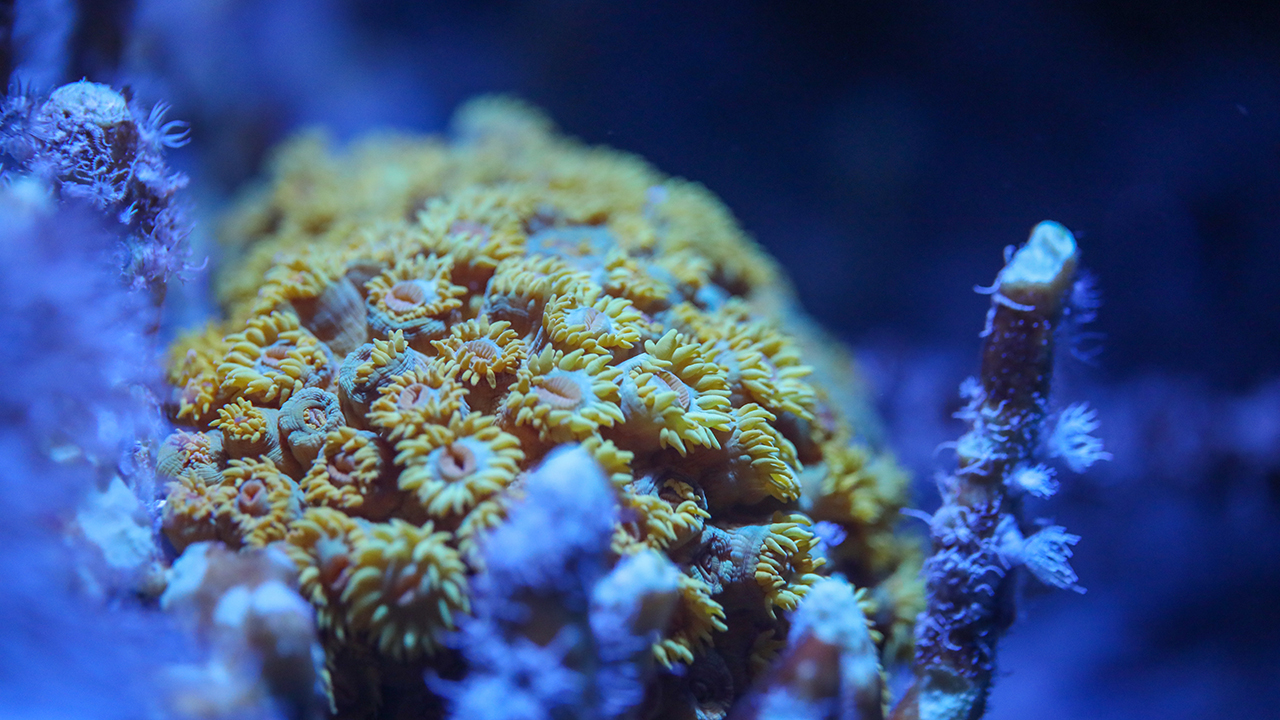
Caribbean Deep Coral Reef
Coral reefs are made up of thousands of tiny animals called coral polyps. In many species, symbiotic algae called zooxanthellae live below the tissue of these polyps. In addition to giving coral its signature vibrant colors, zooxanthellae produce food that provides the coral with up to 90 percent of its energy. The catch for coral reefs in dark waters below the euphotic zone: zooxanthellae produce this nourishment through photosynthesis.
Non-photosynthetic corals, such as the devil’s sea whip and sun coral, must provide for themselves. Using their small tentacles, the coral polyps comb the water for minuscule organisms called zooplankton and other organic particles, which they capture and pull into their mouths. Yes, corals have mouths!
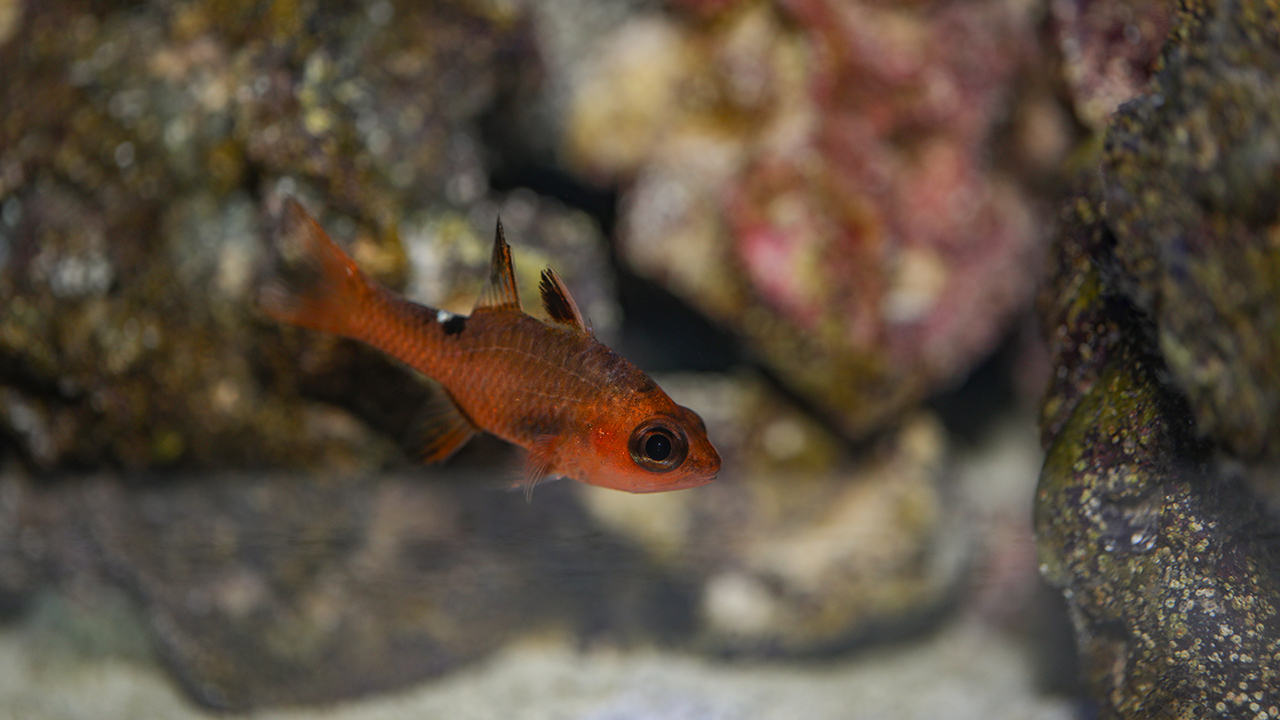
Caribbean Reef at Night
In the dim glow of nighttime on the reef, the whitestar cardinalfish pulls off a perfect illusion. Its deep red color acts like camouflage—because red light fades quickly underwater, the fish blends seamlessly into the darkness. Its large, light-sensitive eyes are built for these shadowy hours, tuned to detect movement and the faintest glimmers of light rather than color. In a world where seeing without being seen can mean survival, the whitestar cardinalfish is a true master of the dark.
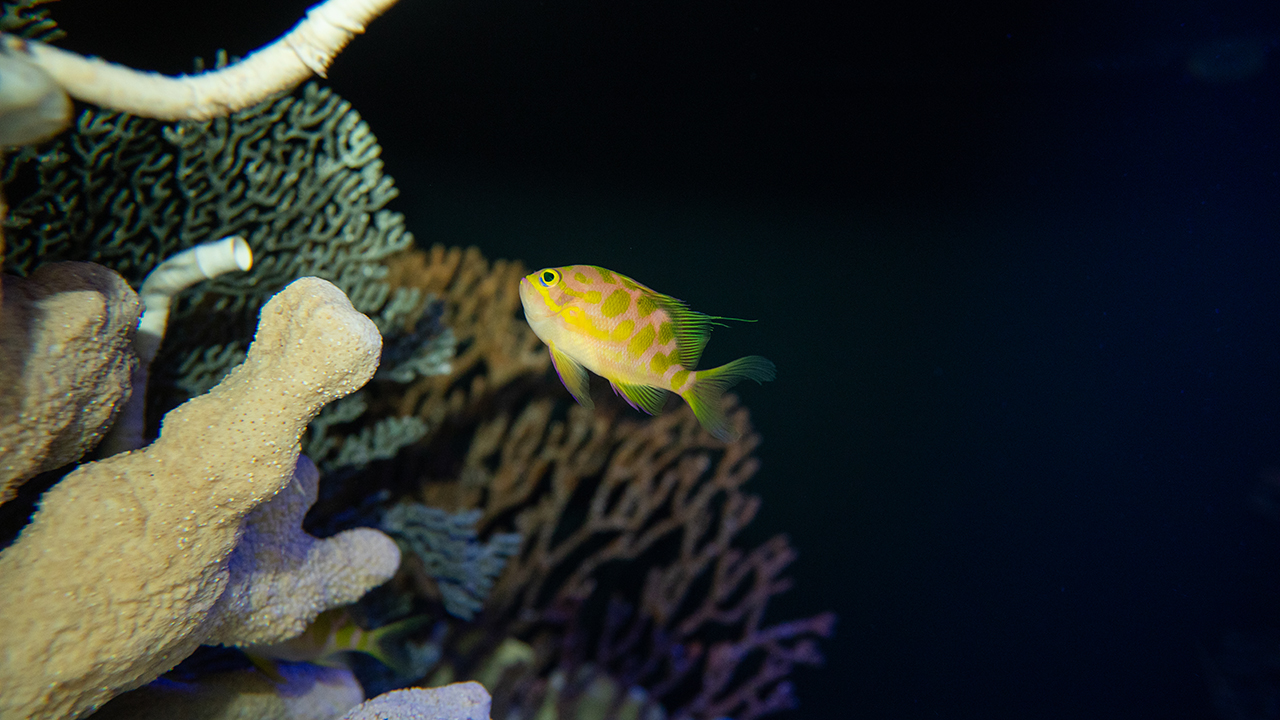
Western Pacific Deep Reef
Like the deep water corals found in the Caribbean, the Western Pacific deep is home to non-photosynthetic species such as wire coral, which hunts like sun coral and devil’s sea whip.
This ecosystem also includes a fascinating little fish called the flashlight fish, a species that has developed an incredible adaptation to navigate the sunless world they inhabit. Near the large eyes of this fish are a pair of light organs filled with bioluminescent bacteria that constantly produce light. The fish use the light to attract prey, as well as to communicate with other flashlight fish. But what if a predator rears its head? Won’t these same light organs make the flashlight fish easy prey for larger species? Fear not—these fish are able to “go dark,” hiding their light organs beneath shutter-like flaps of skin.
Pinecone fish of the Western Pacific produce a similar soft green glow through bioluminescent organs on the sides of their lower jaw.
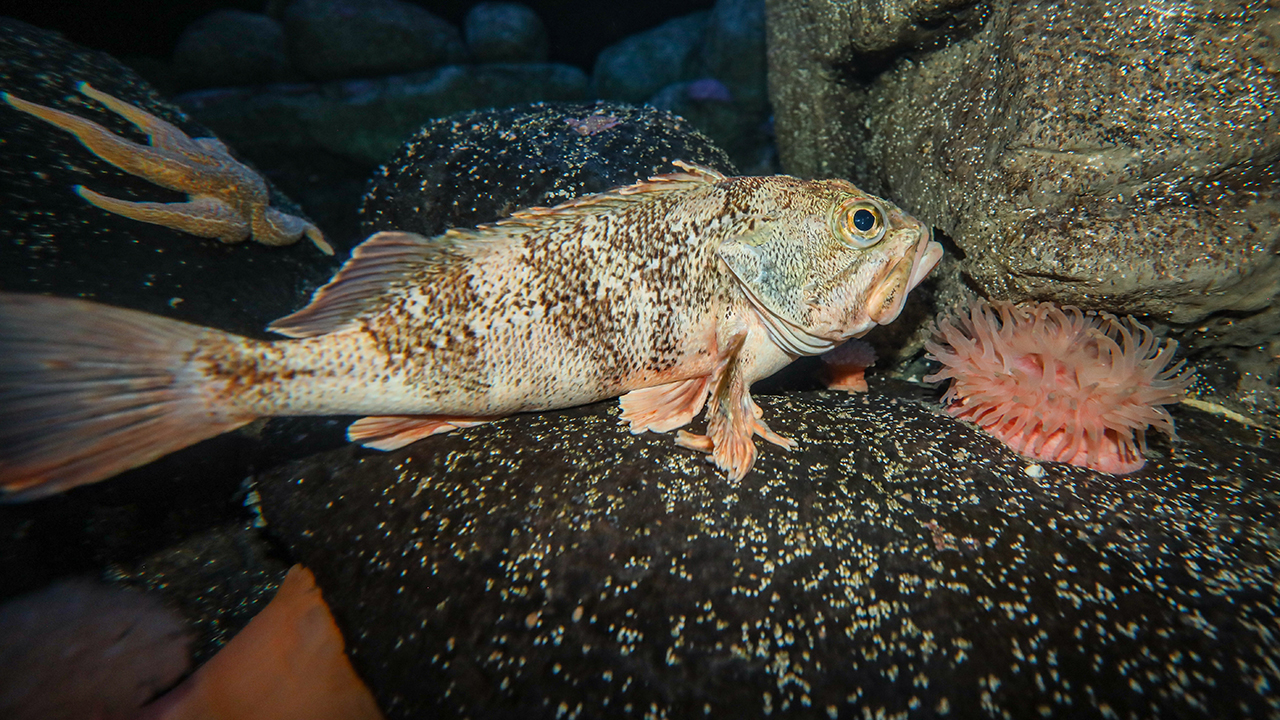
Boulder Reef
Part of the Gulf Of Maine exhibit, the Boulder Reef environment simulates a deepwater invertebrate community. In this shady habitat, many marine animals have evolved to survive where light is limited and temperatures are frigid. You may spot the blackbelly rosefish, whose large eyes make them well adapted to dark waters—and whose mildly venomous dorsal spines hint at its scorpionfish relatives. Nearby, tautog use strong, crushing teeth to feed on hard-shelled invertebrates like crabs and mussels.
The ocean pout, an eel-like fish that spends most of its life near the sea floor, has a slick, mucus-covered skin and blood that contains antifreeze proteins, an adaptation that allows it to live in near-freezing water.
Hidden among the boulders, the American lobster moves slowly along the bottom, using sensory hairs on its legs to taste as it walks. Its powerful claws have distinct roles—one for cutting, one for crushing—and if it loses a limb, it can grow it back through molting. Some lobsters have been known to live for decades, shedding their shells many times over as they continue to grow.
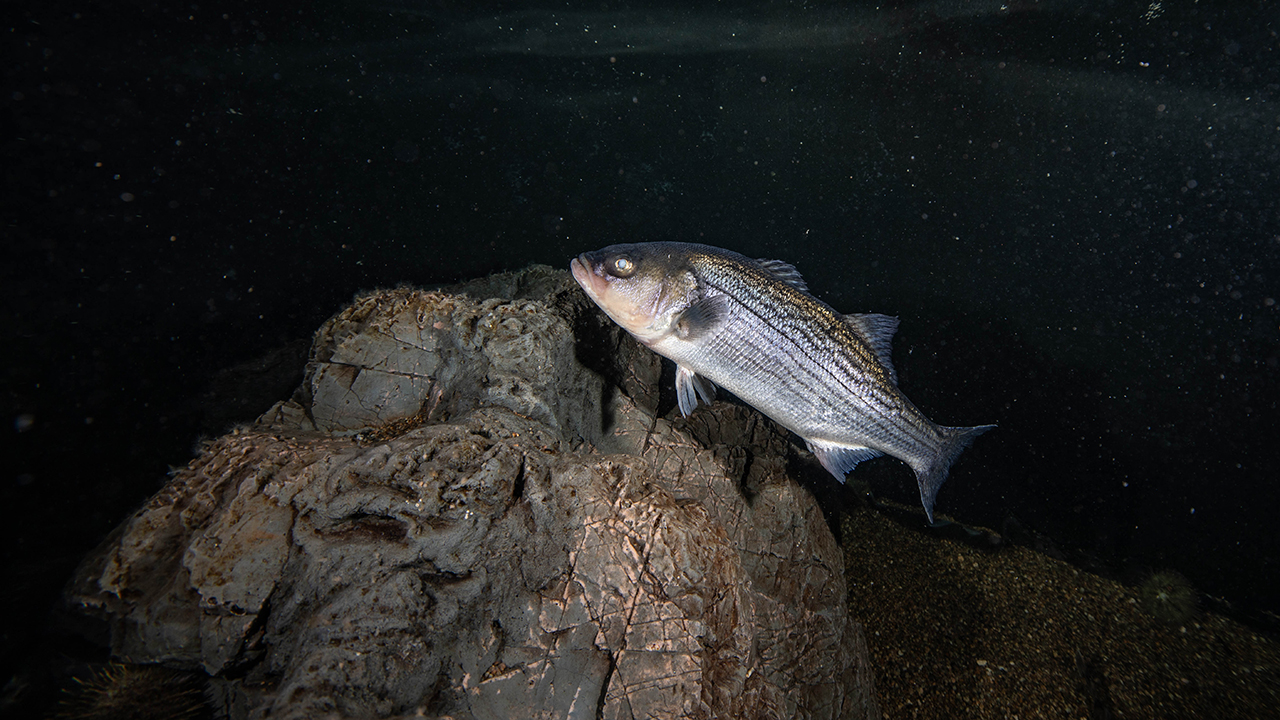
Sandy Bottom
Beneath the waves lies the Sandy Bottom, a calm expanse where sand and shadow meet along the floor of the Gulf of Maine. Here, you’ll find the chain catshark, named for its distinctive pattern, and the striped bass, one of New England’s most recognizable fish.
Little skates, longtime residents of the Aquarium, move quietly across the sand. Though they resemble stingrays, they lack a venomous barb. During reproduction, little skates lay rectangular egg cases of a dark brownish-green color. Their mythical look has earned them the nickname “mermaid’s purses.”
You may spot an Atlantic halibut resting nearby—the largest flatfish species in the world. Born symmetrical, it transforms as one eye migrates to the other side of its head, leaving the fish perfectly adapted to life along the ocean floor.
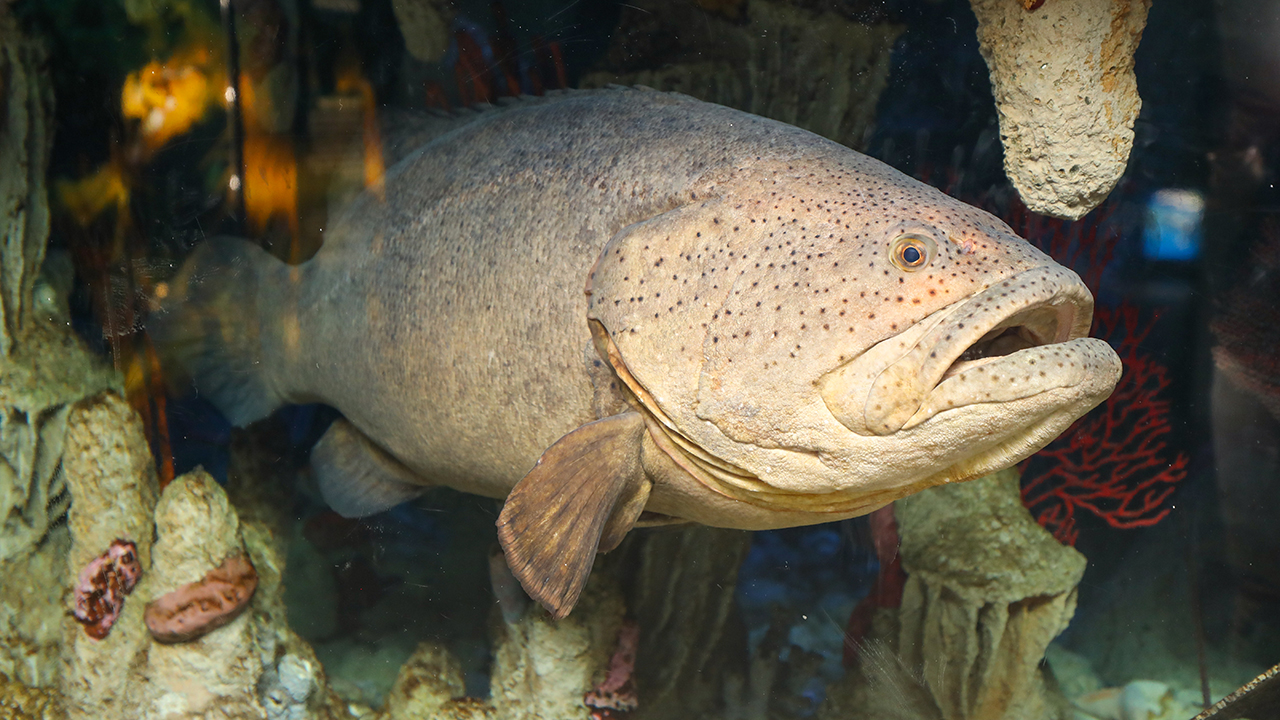
Blue Hole
In the dim depths of the Blue Hole exhibit, you’ll find animals that come alive after dark.
Slipper lobsters are masters of disguise. Primarily nocturnal, they spend much of their time tucked into rocky crevices, their flat, well-camouflaged carapaces helping them disappear against the surrounding stone. The lower light levels in this exhibit make them especially active—so keep an eye out for all five of our residents: three Spanish slipper lobsters and two ridged slipper lobsters.
Sharing the space are three species of squirrelfishes, another group of nocturnal hunters. During the day, they hide among rocks and reefs, emerging only after nightfall to search for food. Their large, specialized eyes help them see clearly in the lower light conditions of the reef at night. And these fish have another surprise in store. They can use their swim bladders to produce sounds—communication signals that can also startle predators!
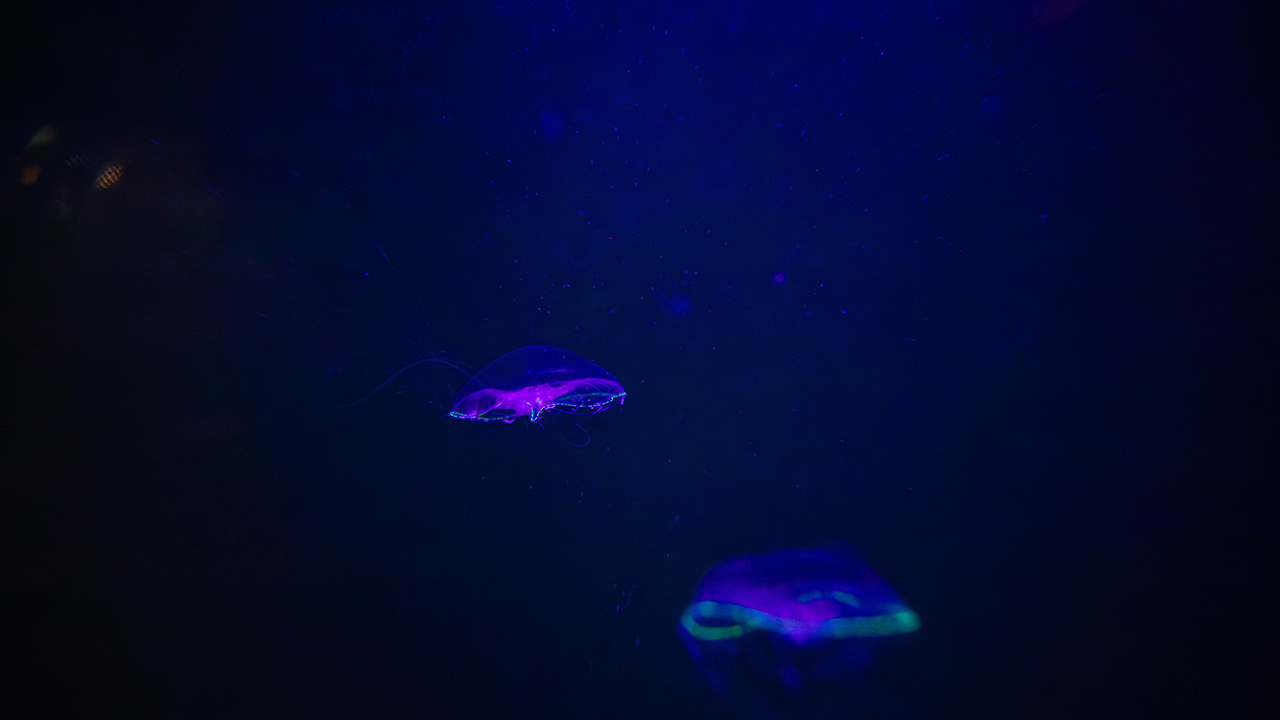
Sea Jellies
Though they are better known as jellyfish, “sea jellies” is a more accurate term, as these diverse and wide-ranging animals are not actually fish at all, but invertebrates belonging to the phylum Cnidaria. There are more than 2,000 species of sea jellies, including a recent addition to the Aquarium’s Sea Jellies exhibit: the crystal jelly.
Their most striking feature is an otherworldly green glow, visible under blacklight. The luminescent protein responsible for this glow is now used in medical research to study gene and cell expression.
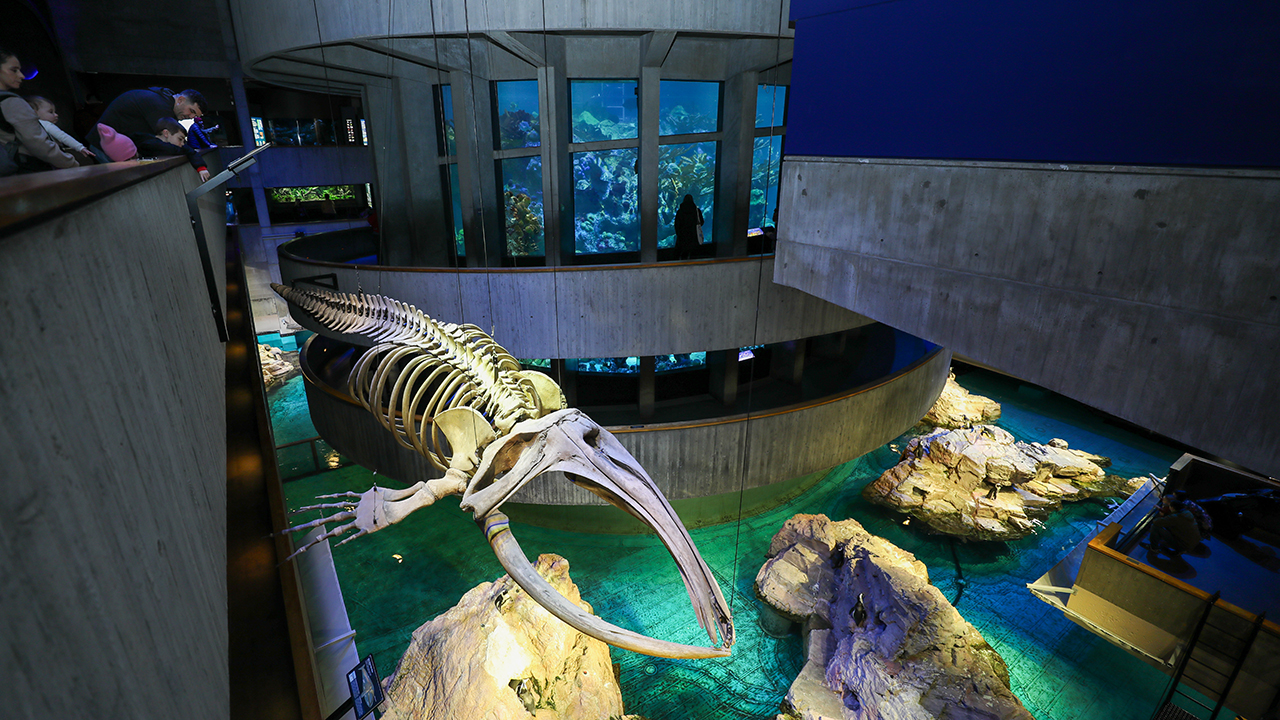
Right whale skeleton
Look up as you pass the Giant Ocean Tank exhibit and you’ll see the 42-foot skeleton of a North Atlantic right whale. The body of this massive animal washed ashore in New Jersey in 1874 before making its way to the Aquarium.
After death, a right whale’s dense blubber keeps its body afloat—unlike many other large whales, which lose buoyancy and eventually sink to the seafloor. They eventually come to rest on the ocean floor in what is known as a whale fall.
In the deep sea, a whale fall transforms into a thriving ecosystem. Scavengers such as hagfish, sleeper sharks, crustaceans, eels, and octopuses feed on the soft tissue, while the surrounding sediment becomes rich with organic matter. Over time, even the bones sustain life: bacteria release hydrogen sulfide that nourishes shellfish, and the skeleton itself becomes home for filter to settle on.
So, don’t be scared of the shadowy corners of the Aquarium! We’re keeping the environments just right for the animals. Visit to learn more about the dark world of the deep ocean.

